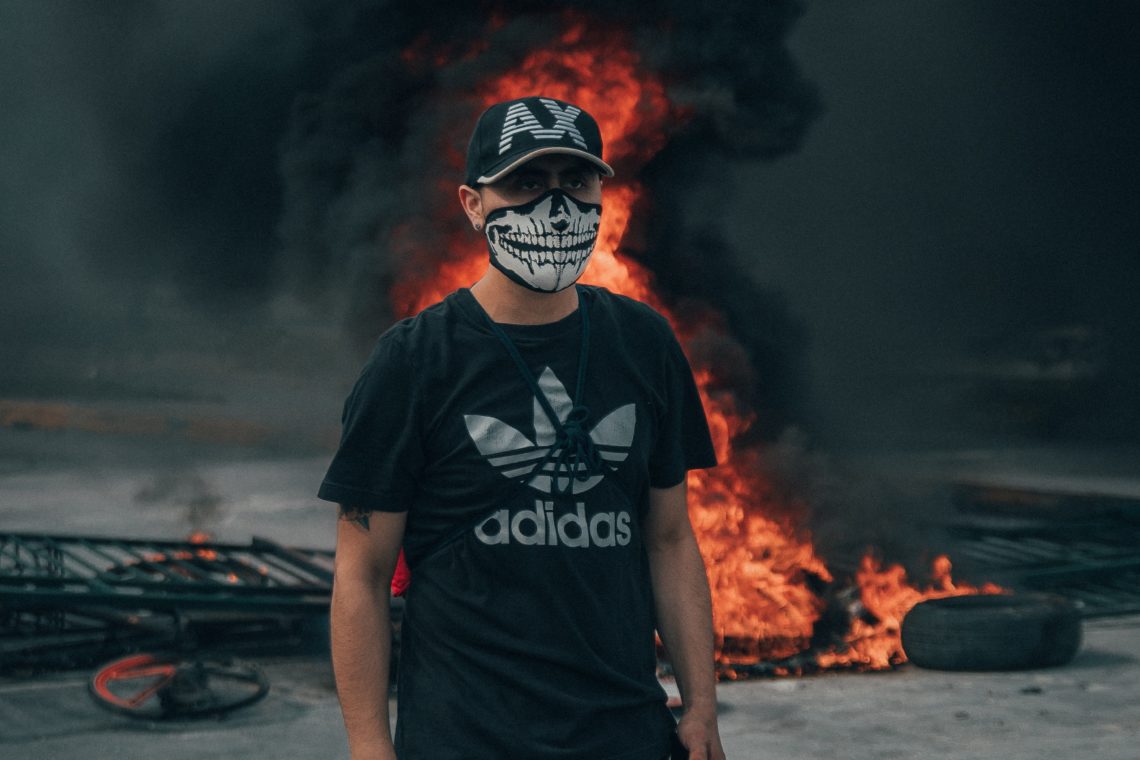In Blacklash I mentioned how even mainstream media outlets use the shorthand of “the violence of last summer” to refer to the protests and uprisings following the murder of George Floyd. (And the killings of Breonna Taylor, Rayshard Brooks, Duante Wright, Ahmaud Arbery, Atatiana Jefferson…)
How does the phrase “the violence of last summer” frame the narrative?
It does more than gloss over the fact that more than 96 percent of last summer’s nationwide Black Lives Matter protests were peaceful. Of those that were not it was often police officers or counterprotesters who instigated the violence. The “if it bleeds, leads” nature of modern media downplays this- when it doesn’t ignore it outright.
It paints the opposite picture. Referring to only “the violence” when referencing the BLM protests as a whole paints all of the protests red. And it is always the BLM protests, not the anti-masking riots, that are referred to this way.
In early 2020, when it became apparent that Black, Brown, and poor urban communities were being hit hardest by Covid-19, mostly white people came out to protest against rules in place to protect their lives and the lives of their fellow citizens. Many of these people arrived at state capitols armed and angry. They were met by a wall of police officers who handled them gently, were not fearful of their AR15s (despite the fact that the right wing has a much higher officer kill count than the left), and did not seem to actually police them in any way. Heavily armed anti-lockdown protesters received stoic disregard as they shoved and shouted into the faces of law enforcement.
A few weeks later, unarmed BLM protestors, often diverse in race and ethnicity, were greeted with tear gas, pepper spray, and rubber bullets. Anti-maskers have literally murdered people yet are not perceived with nearly the fear and derision as those claiming that Black lives matter. The escalation from police in the face of BLM protests is an example of how law enforcement embraces the use of violence in facing a crowd composed predominantly of Black and brown people. In the US mistreatment that results in harm is an acceptable outcome when it comes to controlling people of color.
Even supposedly impartial takes in “liberal” media show bias against BLM. Take this New York Times article that talks about epidemiologists’ reactions to the anti-lockdown protests and riots vs the BLM uprisings after the murder of George Floyd. Nowhere in the article does it explicitly suggest that the reasons that epidemiologists may have been more forgiving and supportive of the BLM protests might be less about politics and more about the fact that the anti-lockdown riots were a direct attack on epidemiological protocols.
BLM protestors: We understand that there is a pandemic going on, but this is something we cannot let stand. As safely as we can, with masks and gallons of hand sanitizer, we will stand up for the value of Black life.
Anti-lockdown protestors: Kill the weak. I need a haircut.
Is it any wonder that, a year after the protests of last summer, support for Black lives mattering is actually LOWER than it was before the protests?
JEFFERSON: Among white Americans, there’s not just this return to normal. This would be – for listeners trying to follow along with the plots and the essay, this would be that third plot that’s in the piece, where white folks are depicted with a purple line. A return to baseline would’ve just been at that zero line – right? – at that zero line. That would say that white opinion toward Black Lives Matter has just returned to where it was on January the 1, 2020.
https://www.npr.org/transcripts/1004467239
DEMBY: But they found that white support didn’t just return to pre-George Floyd levels.
JEFFERSON: Instead, what we see is that purple line – right? – and the current period is below the zero line, which suggests that in the aggregate, overall, on average, white support for Black Lives Matter is now lower than it was on January 1, 2020.
This trend is not new. On July 2nd of 1965, two thirds of the country claimed to support the Civil Rights Act. This is significant because whites constituted 88.6 percent of the total population according to the census in 1960. However, a mere month later, support was down to about fifty percent.
The good news is that a generation later, in the 1980s, those raised under the Act felt that it was working. The vast majority believed that the Civil Rights Act improved the lives of Black people in the US. Today that belief is so prevalent that it was used by Justice Roberts to destroy the Voting Rights Act in Holder in 2013.
Two steps forward, one step back.
Sources
https://news.yahoo.com/state-black-lives-matter-7-150422550.html
https://www.nbcnews.com/news/nbcblk/movement-slogan-rallying-cry-how-black-lives-matter-changed-america-n1252434
https://www.csis.org/analysis/escalating-terrorism-problem-united-states
https://www.npr.org/2021/06/08/1004467239/the-racial-reckoning-that-wasnt
https://www.vox.com/2020/5/27/21271811/george-floyd-protests-minneapolis-lockdown-protests
https://thestrand.ca/unpacking-the-privilege-in-anti-mask-arrests/
https://www.washingtonpost.com/opinions/protests-and-trump-rallies-both-carry-covid-19-risks-but-theres-a-reason-trumps-rallies-are-worse/2020/09/15/a677ddde-f791-11ea-89e3-4b9efa36dc64_story.html
https://sites.uab.edu/humanrights/2020/11/20/the-right-to-protest-black-lives-matter-and-the-anti-lockdown-protests/
